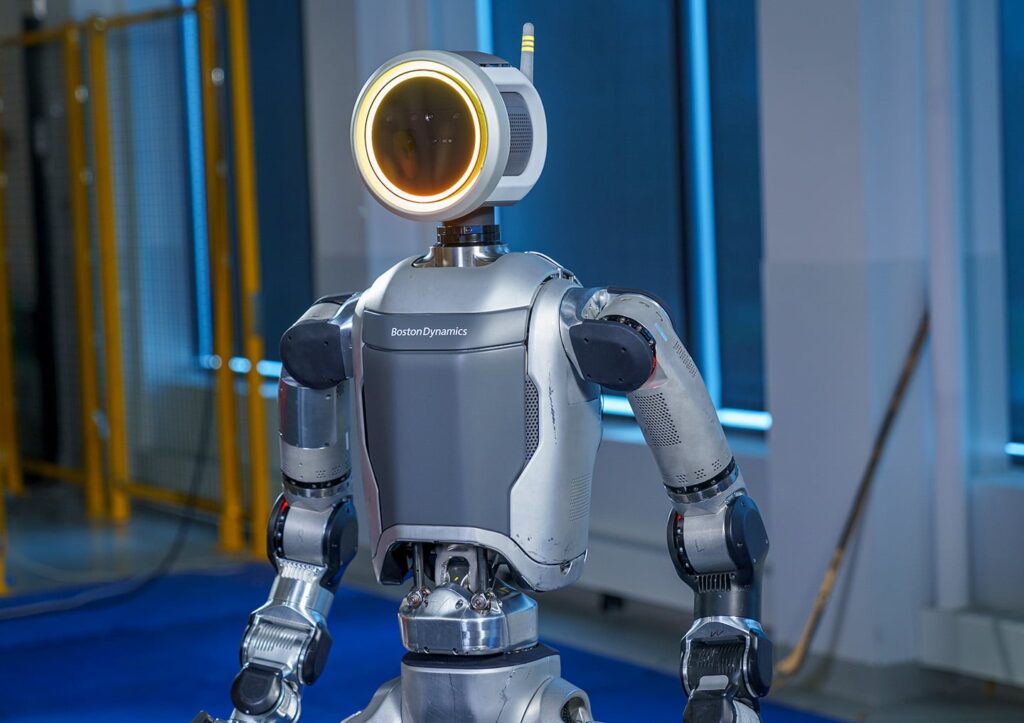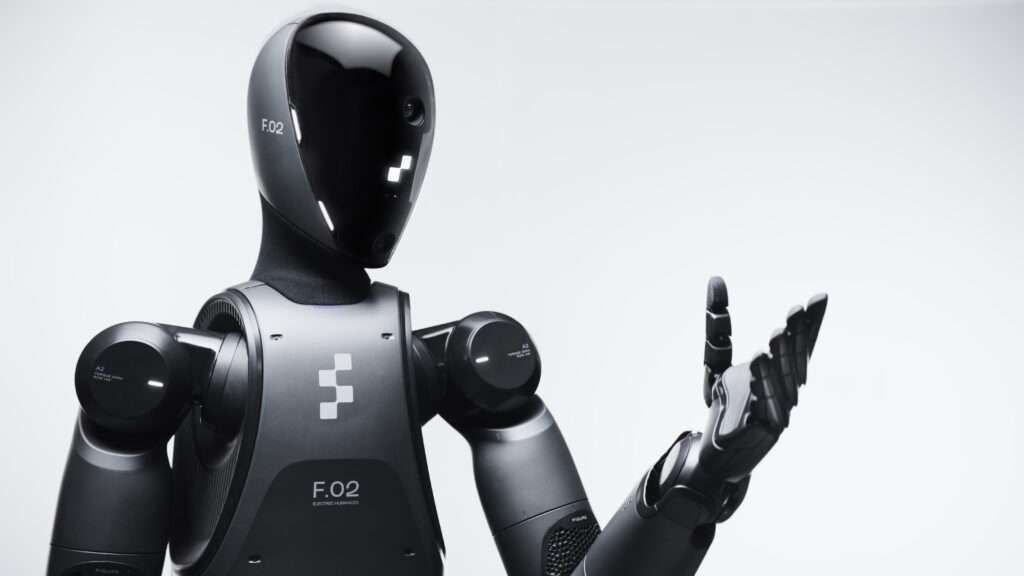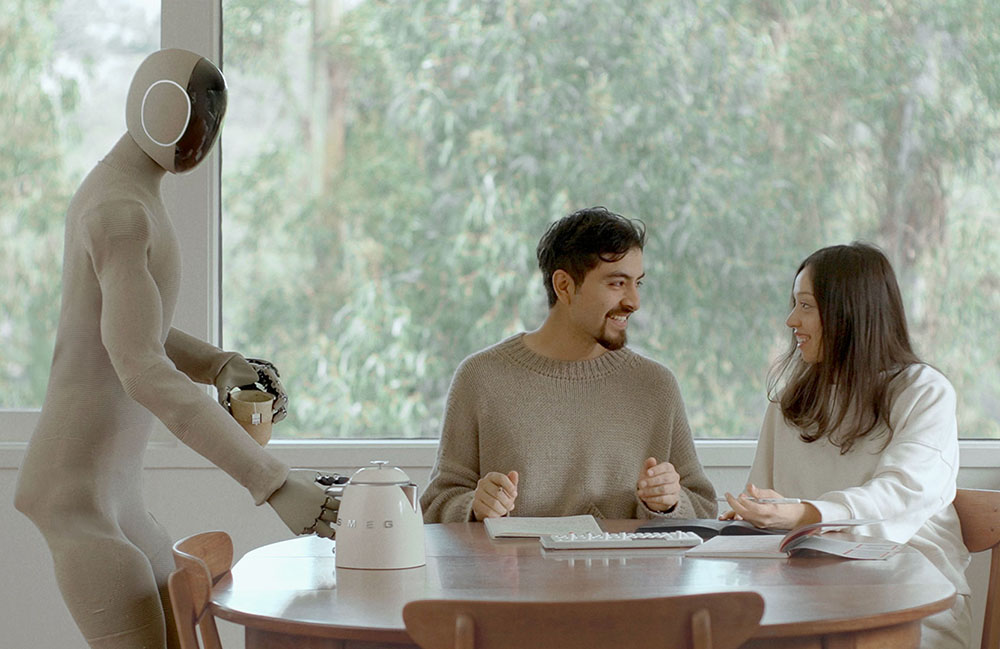The generative AI industry has exploded within the last several years, but “AI” is capable of significantly more than the glut of chatbots that we have become familiar with; in fact, the accelerating field of autonomous robotics may prove to have more far-reaching consequences for our society. Robotics companies like Figure, Boston Dynamics, and 1X have made leaps in bounds in their development of autonomous robots, and all of these companies are converging on the development of humanoid robots for both industrial and in-home use.

Boston Dynamics first made headlines with their Atlas robot; they released videos of it doing gymnastics several years ago, but the original Atlas was still quite clunky and didn’t do much autonomously. Now, Boston Dynamics has completely redesigned Atlas to be fully electric and has refined its AI so that it can learn and complete tasks without much, if any, human supervision. However, it’s very clear that Atlas is not quite designed for home use, and it may not be ready to put away your groceries or do your laundry anytime soon.

Figure, on the other hand, has launched their Figure 02, a humanoid robot initially designed for manufacturing, with plans to expand into home use. They recently published a video demonstration of their Helix AI model, which shows two Figure robots putting away a set of groceries. Within the same week, they released a separate video of their Figure robots sorting packages on a logistics processing line. And within the past month, the robotics company 1X has unveiled its new robot, the Neo Gamma. While Atlas and Figure 02 have hard, metal exteriors, Neo Gamma appears to take a softer approach with its cream colored knit suit and friendlier appearance. The video demonstration that 1X unveiled several weeks ago shows the Neo Gamma serving tea and cleaning windows.

Boston Dynamics, Figure, and 1X have consistently shared product updates that tout what their robots are capable of; however, since their demos are often pre-recorded and edited, it’s difficult to be sure of the extent to which the robots are autonomously completing these tasks. Tesla has also attempted to enter the race to build an autonomous humanoid, and their Optimus robot featured heavily during their “We, Robot” event back in October. Famously, Optimus robots could be seen pouring people beers and handing out high-fives; however, Tesla did not disclose that these Optimus bots were controlled by humans via teleoperation, and were not transparent about the true autonomous capabilities of their product. While Optimus has been in development since 2021, the company has been secretive when it comes to releasing information about its degree of autonomy.
In reality, these robots may be further away from serving you breakfast than the marketing hype might lead you to believe. However, it’s not unreasonable to expect these robots to share our homes sometime in the near future, and the prospect of a robot that could do your chores has captivated the imaginations of many of us that dread doing dishes or laundry. While this future might seem cheery – indeed, a world without folding laundry seems like a utopia – there are some concerning caveats that could come with this technology.
Even in our current situation, with our interactions with AI models limited by screens and keyboards, some folks have fallen in love with chatbots. We have already seen people fall in love with AI companions operated by Replika, and an AI startup named Friend is trying to sell an AI-enabled pendant that can keep you company. This trend is likely to extend to humanoid robots; in fact, several AI-powered sex robots were also unveiled this year at CES. And yes, Elon Musk has said that Tesla’s Optimus robot could someday “be your friend.” This may portend a darker future, where humans become more dependent on AI for companionship, either through fake social media profiles, chatbot companions like those operated by Replika, or humanoids.
We are entering an age that will inevitably be dominated by AI, but our perspective on what that will actually look like is limited by the kinds of interactions we can have with AI right now. While text interfaces will certainly still be useful as we go forward, most large AI companies are focused on creating and improving multi-modal LLMs; this means that these AI models are able to observe and process text-based, audio, visual, or even touch-based data, allowing them to respond to a variety of different cues and become deeply embedded in the way that we interact with the world around us. Right now, many humanoid robots are essentially toddlers that are seeing the world for the first time, but it’s only a matter of time before their knowledge and experience accumulates. We can look to current developments in the AI space to try and think about what we might see on the horizon, but quite a few questions remain unasked and unanswered.
For one, I’m quite concerned about the behavioral and safety risks associated with giving an AI model control over a physical form. Will robotics companies decide to impose certain behavioral restrictions similar to the laws of robotics in Isaac Asimov’s “I, Robot”? What kinds of data will these robots collect, and will the AI models powering them run locally? What will their environmental impact be? How will our social dynamics and relationships change if we automate away everything we don’t want to do ourselves – including the hard work of building and maintaining our relationships? There’s clearly a lot to think about here, and this doesn’t even scratch the surface on issues like the displacement of human labor.
It’s become apparent that the development of humanoid robots has jumped forward by decades, fueled by the massive investment private companies and governments have funneled into AI research. While they might not be ready for primetime yet, the rapid pace of development is astounding. So astounding, in fact, that I would not be surprised if these metal beasts share a roof with us sooner than we might expect.

Leave a Reply